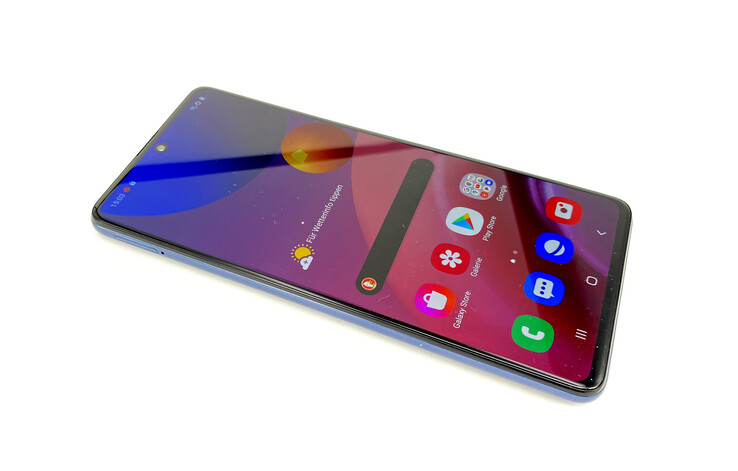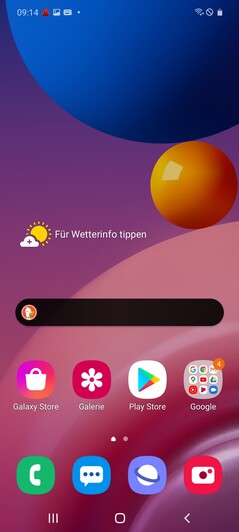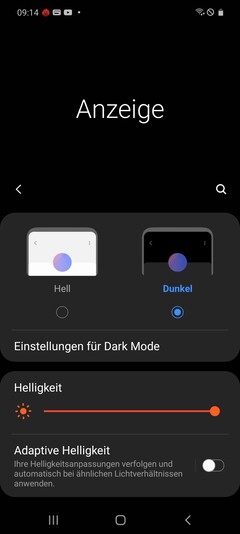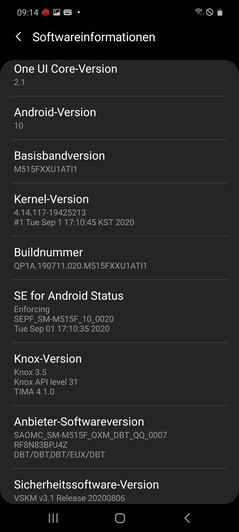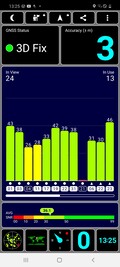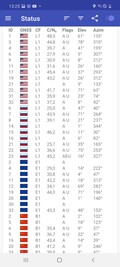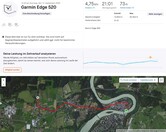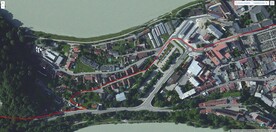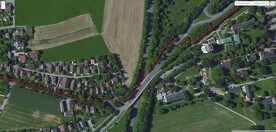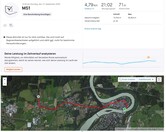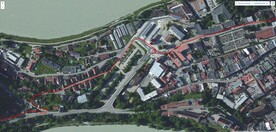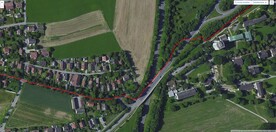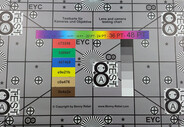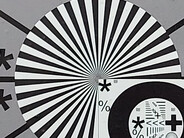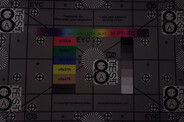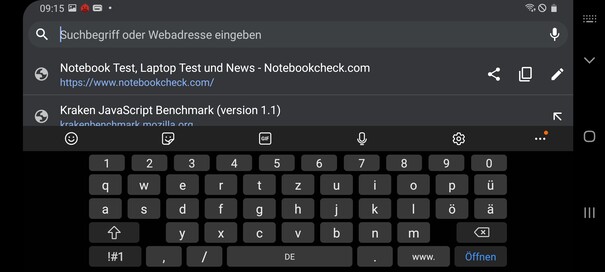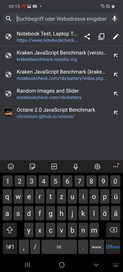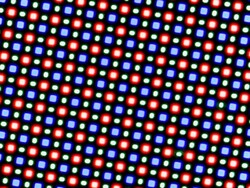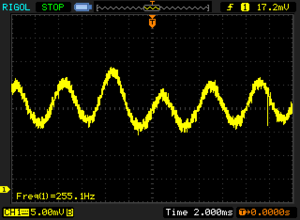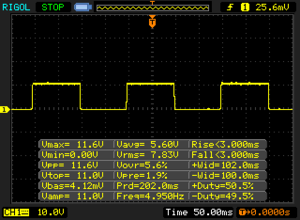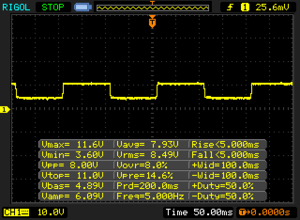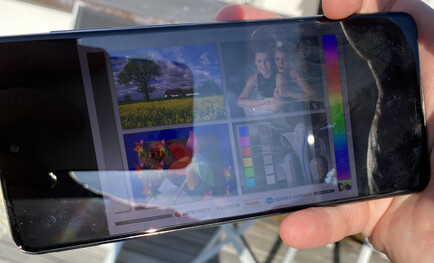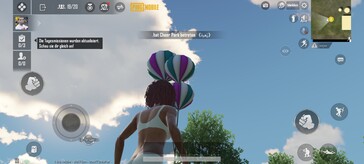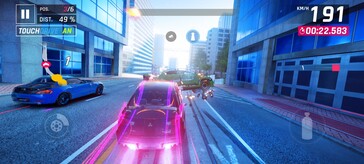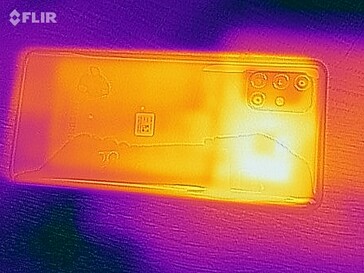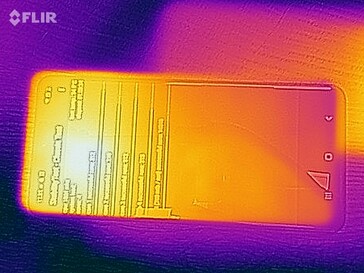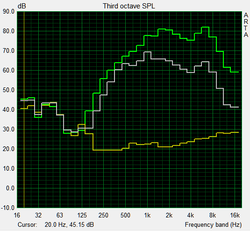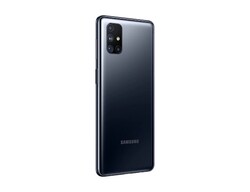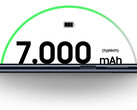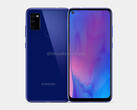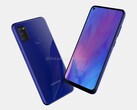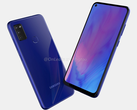Samsung Galaxy M51 Smartphone Review – Large in the mid-range
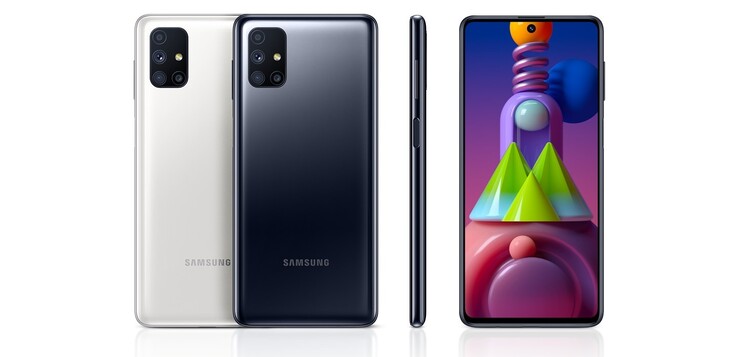
Apparently Samsung has made it its mission to close any gaps in the mid-range. While there is already a lot of choice with the Galaxy M21, M31, A41, and A51 models, we now test the newly available Galaxy M51. It particularly draws some attention with its large screen and extremely high-capacity battery.
At 369 Euros (~$434), the M51 costs the same amount from the manufacturer as a Samsung Galaxy A51, even if that is already older and therefore available for cheaper on the Internet. However, the M51 brings a larger display and a significantly higher-capacity battery. This year you also get a flexible camera system in all the Samsung mid-range smartphones, but the interesting thing about the M51 is that it does not use one of Samsung's own Exynos SoCs. Instead the smartphone is run by a Snapdragon 730 from Qualcomm.
So let's take a look at how the Galaxy M51 fares against the in-house competitors and those from other manufacturers.
Comparison Devices
Rating | Date | Model | Weight | Drive | Size | Resolution | Price |
|---|---|---|---|---|---|---|---|
| 81.3 % v7 (old) | 10 / 2020 | Samsung Galaxy M51 SD 730, Adreno 618 | 213 g | 128 GB UFS 2.0 Flash | 6.70" | 2400x1080 | |
| 80 % v7 (old) | 08 / 2020 | Motorola Moto G 5G Plus SD 765, Adreno 620 | 207 g | 64 GB UFS 2.1 Flash | 6.70" | 2520x1080 | |
| 78.6 % v7 (old) | 08 / 2020 | Sony Xperia 10 II SD 665, Adreno 610 | 151 g | 128 GB eMMC Flash | 6.00" | 2520x1080 | |
| 79.8 % v7 (old) | 01 / 2020 | Samsung Galaxy A51 Exynos 9611, Mali-G72 MP3 | 172 g | 128 GB UFS 2.0 Flash | 6.50" | 2400x1080 | |
| 83.6 % v7 (old) | 07 / 2020 | OnePlus Nord SD 765G, Adreno 620 | 184 g | 256 GB UFS 2.1 Flash | 6.44" | 2440x1080 |
Case – Not too bulky
The smartphone is available in white or dark-gray color, with the reflective back appearing quite modest without any extravagant color effects or anything like that. The front shows a modern design with small bezels and a punch-hole camera in the middle of the top display edge.
While in general, the smartphone feels good in the hand, it is less suited for people with small hands, since it is just too large for that with its 6.7-inch screen. The edges are rounded, but some of them still feel clearly noticeable and rough. In some places, the smartphone can be pressed in minimally, and it can also creak when warping it. However, the workmanship leaves a good impression overall.
The large battery takes its toll in terms of the weight. At 213 grams (~7.5 oz), the Samsung Galaxy M51 is the heaviest smartphone in our comparison field. The Sony Xperia 10 II weighs 41 grams (~1.4 oz) less, for example. At 9.5 mm (~0.37 in), the case is also slightly thicker than in other mid-range smartphones. However, the Galaxy M51 still does not feel bulky, overall.
Equipment – Average storage size
With 128 GB of UFS-2.1 storage and 6 GB of RAM, the Galaxy M51 is well-equipped, but the more affordable version of the OnePlus Nord offers even more storage at a similar price. However, while that does not give you the option to expand the storage via microSD, you can do this without any trouble in the Galaxy M51. NFC is also onboard, allowing you to use mobile payment services with your smartphone.
Unfortunately, the USB-C port is internally only connected via USB 2.0, so that data transfer via cable is not that fast. The sensor equipment is at the usual level for this price class.
Software – OneUI for smaller hands
Samsung's in-house OneUI 2.1 is based on Android 10 with the security patches on the level of August 2020 at the time of our testing. There should be an update soon for the smartphone to stay secure. In the software design, Samsung took pains to keep most of the operation controls in the lower half of the screen to facilitate using the smartphone with one hand and also offer better access for users with smaller hands. This is a good approach, but of course it does not work for third-party apps.
You have to live with some preinstalled third-party apps, but you can uninstall some of them fairly easily.
Communication and GPS – Fast LTE, no 5G
At 800 Mb/s for downloading and 150 Mb/s for uploading, the Galaxy M51 is fast in the LTE net. However, in contrast to the OnePlus Nord it is not a 5G smartphone. While the Galaxy offers several LTE frequencies, it is not a world-wide phone, so that you should inform yourself beforehand about being able to use the mobile Internet when traveling to far-away countries. The reception quality is also decent indoors around the city.
Wi-Fi 5 is onboard, and the Galaxy M51 achieves decent data rates in our tests with the Netgear Nighthawk AX12 reference router, but it does not reach the speeds of a OnePlus Nord or Motorola Moto G 5G Plus.
| Networking | |
| iperf3 transmit AX12 | |
| Motorola Moto G 5G Plus | |
| OnePlus Nord | |
| Sony Xperia 10 II | |
| Samsung Galaxy M51 | |
| Samsung Galaxy A51 | |
| iperf3 receive AX12 | |
| Motorola Moto G 5G Plus | |
| OnePlus Nord | |
| Samsung Galaxy M51 | |
| Sony Xperia 10 II | |
| Samsung Galaxy A51 | |
Indoors, it takes a while until the smartphone finds sufficient satellite signals to determine its position accurately, but then the accuracy is good at 3 meters (~10 ft). It recognizes numerous satellites from various networks.
After our practical test, which is a bike route where we also take the Garmin Edge 520 for comparison, we are able to attest the Samsung Galaxy M51 with good navigation capabilities. While it can even handle challenging places such as the roundabout, it is not displayed at exactly the right place. We also see some smaller inaccuracies in other places, but those who don't depend on absolute precision will probably not notice anything amiss in everyday operation.
Telephone Functions and Voice Quality – Galaxy smartphone with muffled speaker
While Samsung's own phone app focuses on the dial keys, it of course also offers the lists of recent calls and contacts. VoLTE and VoWiFi are supported.
The voice quality of the smartphone is okay: Although the internal earpiece sounds very boomy at maximum volume, at lower volumes our conversation partner is clearly understandable. Our voice is recorded well by the microphone even when we speak at a lower voice. On the other hand, our conversation partner sounds quite muffled via speakerphone and our voice is only transferred when we speak loud enough.
Cameras – A lot of lenses
The Galaxy M51 offers fairly high-resolution cameras in the back. There are four lenses overall, with one lens only serving to provide depth sharpness information, so you cannot take separate pictures with it. It is not possible to gradually adjust the zoom between the main lens and the wide-angle lens, and you can only switch between them. The macro lens is only used in the special macro mode.
While the main camera has a 64-megapixel resolution, by default it combines four pixels into one, allowing it to record pictures with higher light sensitivity. This results in a 16-megapixel image, which is completely sufficient for most situations. However, if you want to make full use of the camera's 64-megapixel resolution, you can do this via a special mode.
The pictures from the main camera are really well illuminated, but when looking closer, some details can become blurry from time to time. Larger areas appear grainy in the detail, but under bad light conditions and high contrasts, the camera does a good job: Details are reproduced fairly sharp and we like the illumination. The wide-angle lens also does a fairly good job, even if you should not blow up the images too much, since details appear blurry.
Videos can be recorded at a maximum resolution of 4K and at 30 fps. You have to choose which camera to use before starting the recording. The exposure adjustment works fast and without any visible steps, but the autofocus likes to pump at times.
In front is a camera with a 32-megapixel resolution. It takes decent pictures in good light conditions but is unable to deliver a usable picture in bad light conditions.
Overall, the camera system of the Samsung Galaxy M51 is at a good class level. It is unfortunate that you cannot zoom in several steps switching the lenses, and that the macro lens can only be used in its own mode. This makes the system slightly less adaptable than those of more expensive smartphones.
Image comparison
Choose a scene and navigate within the first image. One click changes the position on touchscreens. One click on the zoomed-in image opens the original in a new window. The first image shows the scaled photograph of the test device.
Main lens flowerMain lens environmentMain lens low lightUltra wide-angleUnder controlled light conditions in the lab, the main camera produces a decent recording, but some details still appear blurry and colors appear slightly pale. With little light, the object is still fairly recognizable.
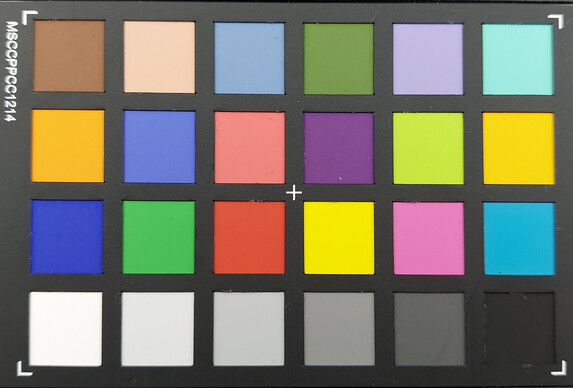
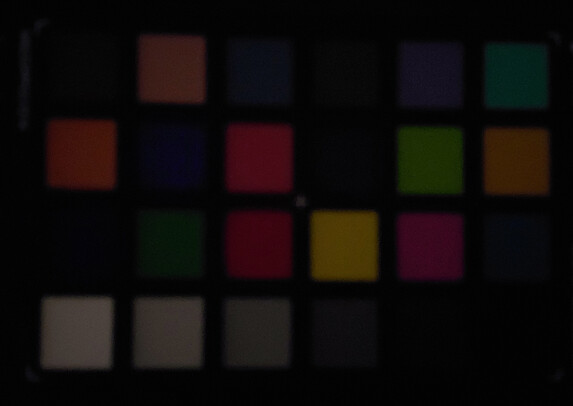
Accessories and Warranty – 24 months of security
Samsung currently does not offer any specific accessories for the Galaxy M51 for later purchase. In addition to the quick charger with USB-C port, the box also contains the corresponding cable, a headset, and a SIM tool.
Samsung offers 24 months of warranty for its smartphones.
Input Devices and Operation – Hardware fingerprint sensor
The Samsung Galaxy M51 provides a hardware fingerprint sensor in the standby button on the right side of the case. If you hold the smartphone in your hand, for right-handed users, the thumb will be automatically placed at this spot, and for left-handed users, the index or middle finger, so the sensor is placed ergonomically correct. Unlocking occurs very fast and reliably, and registering the fingerprints is also completed quickly. You can also unlock the smartphone via face recognition.
The touchscreen works reliably and also responds to very fine inputs. In terms of gestures, Samsung has a lot to offer: For example, the fingerprint sensor can be used to pull the notification area down, you can switch into single-hand mode with a reduced display using a gesture, or you can record screenshots; and tapping twice on the display will activate the smartphone from standby.
Display – AMOLED is a requirement for a Galaxy
The Samsung Galaxy M51 uses an AMOLED display with the expanded Full HD resolution. The refresh rate is 60 Hz. OnePlus and Motorola have set the bar higher with the 90-Hz displays in their devices. With an activated and fully illuminated brightness sensor, the brightness of the built-in panel is very good, and we measure 632 cd/m² on average. At 94%, the brightness distribution is also fairly even.
Thanks to OLED technology, the separate pixels can be turned off completely, allowing it to display completely black color, which causes colors to appear more vibrant to the eye. So the images on the display of the Galaxy M51 appear vibrant and sharp.
One disadvantage of OLED displays is the constant flickering, since there is no background illumination that could be dimmed. This means that the pixels have to be turned on and off in quick succession to lower the brightness. In the Galaxy M51 this happens below full brightness at a frequency of 255 Hz, which is quite typical for OLED displays. Those that are sensitive to flickering displays should try out the Galaxy M51 before purchasing it.
| |||||||||||||||||||||||||
Brightness Distribution: 94 %
Center on Battery: 626 cd/m²
Contrast: ∞:1 (Black: 0 cd/m²)
ΔE ColorChecker Calman: 2.88 | ∀{0.5-29.43 Ø4.78}
ΔE Greyscale Calman: 5.9 | ∀{0.09-98 Ø5}
97.6% sRGB (Calman 2D)
Gamma: 3.441
CCT: 6415 K
| Samsung Galaxy M51 Super AMOLED, 2400x1080, 6.7" | Motorola Moto G 5G Plus LTPS, 2520x1080, 6.7" | Sony Xperia 10 II OLED, 2520x1080, 6" | Samsung Galaxy A51 AMOLED, 2400x1080, 6.5" | OnePlus Nord AMOLED, 2440x1080, 6.4" | |
|---|---|---|---|---|---|
| Screen | 24% | 21% | 0% | 10% | |
| Brightness middle (cd/m²) | 626 | 461 -26% | 591 -6% | 589 -6% | 529 -15% |
| Brightness (cd/m²) | 632 | 458 -28% | 590 -7% | 589 -7% | 531 -16% |
| Brightness Distribution (%) | 94 | 93 -1% | 97 3% | 94 0% | 94 0% |
| Black Level * (cd/m²) | 0.52 | ||||
| Colorchecker dE 2000 * | 2.88 | 1.01 65% | 1.42 51% | 2.22 23% | 2.53 12% |
| Colorchecker dE 2000 max. * | 4.97 | 2.1 58% | 3.83 23% | 8.24 -66% | 4.52 9% |
| Greyscale dE 2000 * | 5.9 | 1.5 75% | 2.4 59% | 2.6 56% | 1.7 71% |
| Gamma | 3.441 64% | 2.25 98% | 2.215 99% | 2.111 104% | 2.249 98% |
| CCT | 6415 101% | 6701 97% | 9014 72% | 6508 100% | 6462 101% |
| Contrast (:1) | 887 |
* ... smaller is better
Screen Flickering / PWM (Pulse-Width Modulation)
| Screen flickering / PWM detected | 255 Hz | ||
The display backlight flickers at 255 Hz (worst case, e.g., utilizing PWM) . The frequency of 255 Hz is relatively high, so most users sensitive to PWM should not notice any flickering. However, there are reports that some users are still sensitive to PWM at 500 Hz and above, so be aware. In comparison: 53 % of all tested devices do not use PWM to dim the display. If PWM was detected, an average of 8118 (minimum: 5 - maximum: 343500) Hz was measured. | |||
Our measurements with the spectral photometer and the CalMAN software show relatively low color deviations from the target value in the "Natural" mode, which can be activated in the settings. This mode also allows you to evaluate printed colors fairly well. In the default "Vibrant" mode, the deviations are noticeably higher, but colors appear more vibrant.
The color-space coverage is only fairly complete in the sRGB color space. However, our measurements can only point out some trends here, since we only measure a two-dimensional color space.
The response time of the display is fairly short and so also suited well for gaming.
Display Response Times
| ↔ Response Time Black to White | ||
|---|---|---|
| 6 ms ... rise ↗ and fall ↘ combined | ↗ 3 ms rise | |
| ↘ 3 ms fall | ||
| The screen shows very fast response rates in our tests and should be very well suited for fast-paced gaming. In comparison, all tested devices range from 0.1 (minimum) to 240 (maximum) ms. » 17 % of all devices are better. This means that the measured response time is better than the average of all tested devices (20.2 ms). | ||
| ↔ Response Time 50% Grey to 80% Grey | ||
| 10 ms ... rise ↗ and fall ↘ combined | ↗ 5 ms rise | |
| ↘ 5 ms fall | ||
| The screen shows good response rates in our tests, but may be too slow for competitive gamers. In comparison, all tested devices range from 0.165 (minimum) to 636 (maximum) ms. » 22 % of all devices are better. This means that the measured response time is better than the average of all tested devices (31.6 ms). | ||
The high brightness also allows using the M51 outdoors on bright days. However, we don't recommend looking at the screen in direct sunlight for longer periods, since this is very strenuous for the eyes.
Looking at the display from very steep viewing angles, the contents appear at most minimally darker, but overall they are still very clear.
Performance – Average fast smartphone
The Qualcomm Snapdragon 730 appears to be a good choice for the Galaxy M51. The mid-range SoC enables processor as well as graphics performances that, while not quite reaching the level of the fastest devices in this price class, are not far below that either. With this, the smartphone does particularly well in everyday operation, without stuttering in the menu or volume adjustment even with more-demanding apps running in the background.
| PCMark for Android | |
| Work performance score (sort by value) | |
| Samsung Galaxy M51 | |
| Motorola Moto G 5G Plus | |
| Sony Xperia 10 II | |
| Samsung Galaxy A51 | |
| OnePlus Nord | |
| Average Qualcomm Snapdragon 730 (8626 - 9075, n=4) | |
| Work 2.0 performance score (sort by value) | |
| Samsung Galaxy M51 | |
| Motorola Moto G 5G Plus | |
| Sony Xperia 10 II | |
| Samsung Galaxy A51 | |
| OnePlus Nord | |
| Average Qualcomm Snapdragon 730 (7177 - 7913, n=4) | |
| AnTuTu v8 - Total Score (sort by value) | |
| Samsung Galaxy M51 | |
| Motorola Moto G 5G Plus | |
| Sony Xperia 10 II | |
| Samsung Galaxy A51 | |
| OnePlus Nord | |
| Average Qualcomm Snapdragon 730 (247507 - 247877, n=2) | |
While you have to expect some shorter wait or load times for websites and images on the Internet, overall the browsing speed of the Samsung Galaxy M51 is at the class level.
| Jetstream 2 - 2.0 Total Score | |
| Average of class Smartphone (23.8 - 387, n=153, last 2 years) | |
| OnePlus Nord (Chrome 84) | |
| Samsung Galaxy M51 (Chrome 85) | |
| Motorola Moto G 5G Plus (Chrome 83) | |
| Average Qualcomm Snapdragon 730 (36.6 - 50.1, n=4) | |
| Samsung Galaxy A51 (Chrome 79) | |
| JetStream 1.1 - Total Score | |
| OnePlus Nord (Chrome 84) | |
| Motorola Moto G 5G Plus (Chrome 83) | |
| Average Qualcomm Snapdragon 730 (65.3 - 87.5, n=4) | |
| Samsung Galaxy M51 (Chrome 85) | |
| Samsung Galaxy A51 (Chrome 79) | |
| Sony Xperia 10 II (Chrome 84) | |
| Speedometer 2.0 - Result 2.0 | |
| Average of class Smartphone (15.2 - 643, n=128, last 2 years) | |
| OnePlus Nord (Chome 84) | |
| Motorola Moto G 5G Plus (Chrome 83) | |
| Samsung Galaxy M51 (Chome 85) | |
| Average Qualcomm Snapdragon 730 (32.8 - 46.5, n=4) | |
| Samsung Galaxy A51 (Chrome 79) | |
| WebXPRT 3 - Overall | |
| Average of class Smartphone (38 - 380, n=35, last 2 years) | |
| OnePlus Nord (Chrome 84) | |
| Motorola Moto G 5G Plus (Chrome 83) | |
| Average Qualcomm Snapdragon 730 (60 - 86, n=4) | |
| Samsung Galaxy M51 (Chrome 85) | |
| Samsung Galaxy A51 (Chrome 79) | |
| Sony Xperia 10 II (Chrome 84) | |
| Octane V2 - Total Score | |
| Average of class Smartphone (2228 - 121337, n=200, last 2 years) | |
| OnePlus Nord (Chrome 84) | |
| Samsung Galaxy M51 (Chrome 85) | |
| Motorola Moto G 5G Plus (Chrome 83) | |
| Average Qualcomm Snapdragon 730 (12771 - 17501, n=4) | |
| Samsung Galaxy A51 (Chrome 79) | |
| Sony Xperia 10 II (Chrome 84) | |
| Mozilla Kraken 1.1 - Total | |
| Sony Xperia 10 II (Chrome 84) | |
| Samsung Galaxy A51 (Chrome 79) | |
| Average Qualcomm Snapdragon 730 (2564 - 3436, n=4) | |
| OnePlus Nord (Chrome 84) | |
| Samsung Galaxy M51 (Chrome 85) | |
| Motorola Moto G 5G Plus (Chrome 83) | |
| Average of class Smartphone (257 - 28190, n=155, last 2 years) | |
* ... smaller is better
The internal storage is not quite as fast as in the OnePlus Nord or the Motorola Moto G 5G Plus, but it is still fast enough to keep load times or data transfers short. With an inserted microSD card, the smartphone also delivers good data transfer rates, as our test with the Toshiba Exceria Pro M501 reference microSD card shows.
| Samsung Galaxy M51 | Motorola Moto G 5G Plus | Sony Xperia 10 II | Samsung Galaxy A51 | OnePlus Nord | Average 128 GB UFS 2.0 Flash | Average of class Smartphone | |
|---|---|---|---|---|---|---|---|
| AndroBench 3-5 | 20% | -41% | -4% | 59% | -1% | 388% | |
| Sequential Read 256KB (MB/s) | 491.7 | 885 80% | 293.5 -40% | 496.1 1% | 956 94% | 530 ? 8% | 2223 ? 352% |
| Sequential Write 256KB (MB/s) | 189.8 | 180.2 -5% | 188.2 -1% | 184.9 -3% | 473.1 149% | 212 ? 12% | 1838 ? 868% |
| Random Read 4KB (MB/s) | 123.6 | 138.1 12% | 76.8 -38% | 110.8 -10% | 126.7 3% | 130.6 ? 6% | 295 ? 139% |
| Random Write 4KB (MB/s) | 114.5 | 119.3 4% | 56.7 -50% | 104.4 -9% | 104.5 -9% | 101.2 ? -12% | 335 ? 193% |
| Sequential Read 256KB SDCard (MB/s) | 74.8 ? | 87.1 ? 16% | 29.15 ? -61% | 73 ? -2% | 68.3 ? -9% | ||
| Sequential Write 256KB SDCard (MB/s) | 59.4 ? | 65.7 ? 11% | 26.13 ? -56% | 60.1 ? 1% | 53.2 ? -10% |
Games – Not too demanding, please
Basically you can also play slightly more demanding games with the Samsung Galaxy M51, but you have to reduce the details in PUBG Mobile to keep the frame rate safely above 30 fps. The fast Asphalt 9 racing game has some trouble to deliver a constant 30 fps even at minimal settings. If you want to play some graphically rather simple mobile games, the Galaxy M51 is a good choice, but real hardcore gamers who don't want to spend more money should take a look at the OnePlus Nord where they get a more stable 30 fps and in parts even more in games at this point.
We test the frame rates with the software suite of our partner GameBench.
Emissions – Heavy throttling
Temperature
The Samsung Galaxy M51 can get quite warm under longer load. We already measure up to 46.9 °C (116.4 °F) in normal room temperature, but on a hot summer day, this heat development can become critical. On the other hand, during idle operation there is no noticeable warming.
Using the GFXBench battery test, we evaluate whether there are some problems with the performance under longer loads. Indeed we see a drop of the frame rates by more than 20% after 15 runs of the benchmark. After that, the performance remains at a lower level.
(-) The maximum temperature on the upper side is 46.9 °C / 116 F, compared to the average of 35.2 °C / 95 F, ranging from 21.9 to 247 °C for the class Smartphone.
(±) The bottom heats up to a maximum of 44.3 °C / 112 F, compared to the average of 34 °C / 93 F
(+) In idle usage, the average temperature for the upper side is 24.5 °C / 76 F, compared to the device average of 32.9 °C / 91 F.
Speaker
The small speaker on the bottom edge produces a decent bang and can become quite loud. However, the sound is tilted toward the highs and the speaker does not deliver a full-sounding spectrum. For those who only occasionally watch a video or listen to a piece of music, the speaker should be sufficient. However, all the others should appreciate the 3.5-mm audio port for headphones or the Bluetooth connection. Both methods provide clean sound to the speakers or headphones.
Samsung Galaxy M51 audio analysis
(+) | speakers can play relatively loud (89.9 dB)
Bass 100 - 315 Hz
(-) | nearly no bass - on average 85.6% lower than median
(+) | bass is linear (0% delta to prev. frequency)
Mids 400 - 2000 Hz
(-) | nearly no mids - on average 85.6% lower than median
(+) | mids are linear (0% delta to prev. frequency)
Highs 2 - 16 kHz
(-) | nearly no highs - on average 85.6% lower than median
(+) | highs are linear (0% delta to prev. frequency)
Overall 100 - 16.000 Hz
(-) | overall sound is not linear (126.6% difference to median)
Compared to same class
» 96% of all tested devices in this class were better, 3% similar, 0% worse
» The best had a delta of 11%, average was 35%, worst was 134%
Compared to all devices tested
» 99% of all tested devices were better, 1% similar, 0% worse
» The best had a delta of 4%, average was 24%, worst was 134%
OnePlus Nord audio analysis
(+) | speakers can play relatively loud (84.9 dB)
Bass 100 - 315 Hz
(-) | nearly no bass - on average 74.7% lower than median
(+) | bass is linear (0% delta to prev. frequency)
Mids 400 - 2000 Hz
(-) | nearly no mids - on average 74.7% lower than median
(+) | mids are linear (0% delta to prev. frequency)
Highs 2 - 16 kHz
(-) | nearly no highs - on average 74.7% lower than median
(+) | highs are linear (0% delta to prev. frequency)
Overall 100 - 16.000 Hz
(-) | overall sound is not linear (113.3% difference to median)
Compared to same class
» 87% of all tested devices in this class were better, 2% similar, 11% worse
» The best had a delta of 11%, average was 35%, worst was 134%
Compared to all devices tested
» 96% of all tested devices were better, 1% similar, 3% worse
» The best had a delta of 4%, average was 24%, worst was 134%
Battery Life – Almost nothing else lasts that long
Power Consumption
The power consumption is slightly above those of other smartphones with the Snapdragon 730. This might be due to the large screen of the Galaxy M51, but overall, the differences are not that large. The smartphone shows itself as relatively efficient in general, as long as the load is limited. However, under load the consumption is at a medium level.
| Off / Standby | |
| Idle | |
| Load |
|
Key:
min: | |
| Samsung Galaxy M51 7000 mAh | Motorola Moto G 5G Plus 5000 mAh | Sony Xperia 10 II 3600 mAh | Samsung Galaxy A51 4000 mAh | OnePlus Nord 4115 mAh | Average Qualcomm Snapdragon 730 | Average of class Smartphone | |
|---|---|---|---|---|---|---|---|
| Power Consumption | -56% | -41% | -9% | -32% | 12% | -23% | |
| Idle Minimum * (Watt) | 0.8 | 1.5 -88% | 1.5 -88% | 0.9 -13% | 1.8 -125% | 0.643 ? 20% | 0.848 ? -6% |
| Idle Average * (Watt) | 1.3 | 2.1 -62% | 2.1 -62% | 1.7 -31% | 2.1 -62% | 1.235 ? 5% | 1.435 ? -10% |
| Idle Maximum * (Watt) | 1.8 | 2.9 -61% | 2.8 -56% | 1.8 -0% | 2.3 -28% | 1.448 ? 20% | 1.621 ? 10% |
| Load Average * (Watt) | 4.8 | 6.7 -40% | 4.5 6% | 5.2 -8% | 3.4 29% | 4.28 ? 11% | 6.99 ? -46% |
| Load Maximum * (Watt) | 7 | 9.2 -31% | 7.2 -3% | 6.6 6% | 5.2 26% | 6.65 ? 5% | 11.3 ? -61% |
* ... smaller is better
Battery Life
It is justified to call the Samsung Galaxy M51 a "battery monster." Until now, you could only find a 7000-mAh battery in bulky outdoor smartphones or in tablets. So it is not surprising that the battery life outlasts those of similarly priced competitors by a long time. Our WLAN test doesn't seem to end, and only after more than 25 hours do the lights turn off in the Galaxy M51.
With this, you could surf for three whole workdays in the Internet and would still have some time left. During regular usage, 4-5 days without a recharge are definitely possible. Those who use all the power their smartphone can give will still be able to use it for 6 hours without a recharge, and watching movies without an Internet connection and even long flights should not cause any problem.
The 25-Watt quick charger needs barely two hours to completely recharge the high-capacity battery.
| Samsung Galaxy M51 7000 mAh | Motorola Moto G 5G Plus 5000 mAh | Sony Xperia 10 II 3600 mAh | Samsung Galaxy A51 4000 mAh | OnePlus Nord 4115 mAh | |
|---|---|---|---|---|---|
| Battery runtime | -44% | -51% | -40% | -33% | |
| Reader / Idle (h) | 44 | 25.8 -41% | 28.2 -36% | 33.4 -24% | |
| H.264 (h) | 28.1 | 9.7 -65% | 14.1 -50% | 17.7 -37% | |
| WiFi v1.3 (h) | 25.1 | 15.2 -39% | 12.4 -51% | 11.6 -54% | 14.5 -42% |
| Load (h) | 6.1 | 4.2 -31% | 4.8 -21% | 4.4 -28% |
Pros
Cons
Verdict – One big strength, one weakness
"Battery life, battery life, battery life" was probably the motto when designing the Samsung Galaxy M51, and at more than 25 hours in our WLAN test, this goal definitely has been achieved. Still, the Galaxy smartphone is neither bulky nor unwieldy, and the battery technology has really made huge progress in the last few years here.
The design of our test unit is rather utilitarian but should not scare anyone away either. While the storage equipment is not exemplary, it is decent, just like the WLAN speed. In terms of the performance, the smartphone is also at the average level of the class. We like the locating accuracy, the display is bright, and the mono speaker is loud, but it doesn't produce particularly good sound.
The high heat development under load is worrisome. Particularly during hot summer days, the phone becomes uncomfortably warm and needs to throttle its performance by more than 20%. Those who want 5G have to look elsewhere and the same goes for those whose wish list includes a smooth 90-Hz display.
The Galaxy M51 is an endurance champion with average equipment that hardly shows any weaknesses besides the strong heat development.
Overall, Samsung has delivered a mid-range smartphone here that should convince many customers with its outstanding battery life.
Samsung Galaxy M51
- 08/31/2022 v7 (old)
Florian Schmitt




